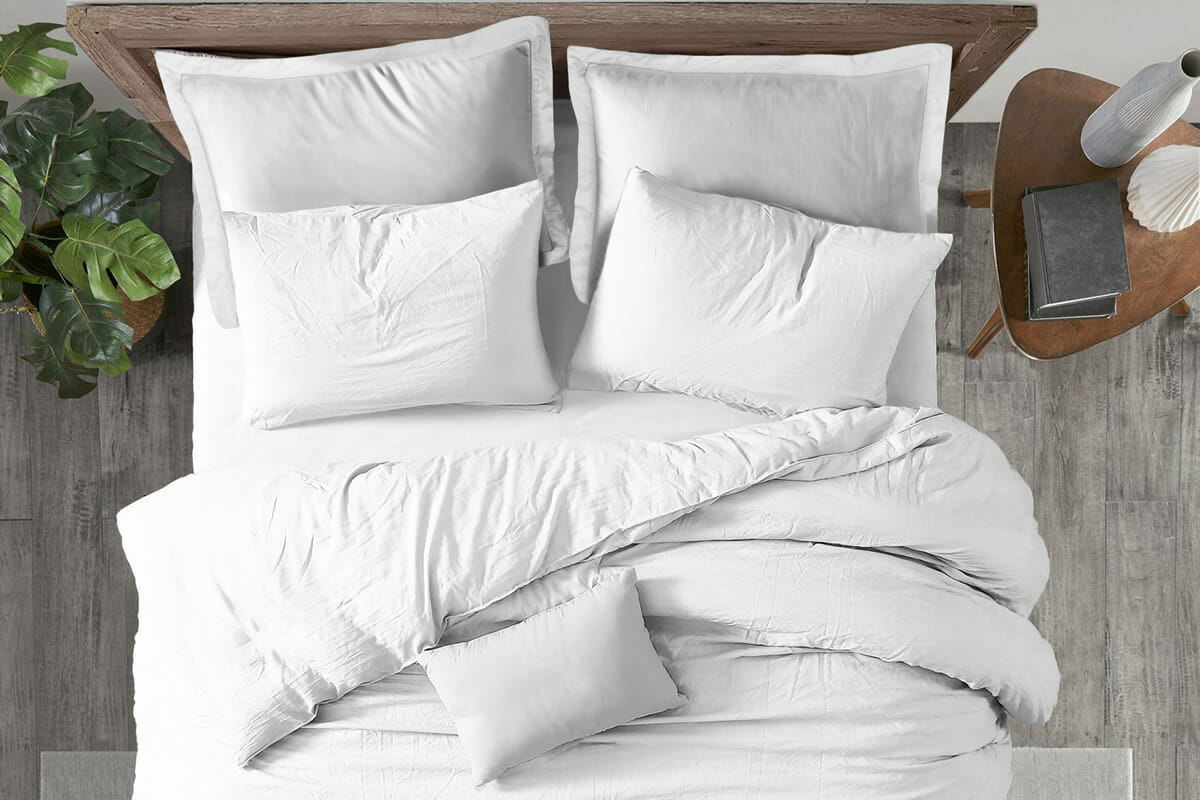
02 Jun Filling: Poly Down Alternative vs. Traditional Down
I’m sure you’ve heard it or said it a thousand times in your life: it’s what’s on the inside that counts. Even though this is 100% true when it comes to people, it can even be applied to pillows and duvet covers.
Maybe that’s a bit of a stretch, but when it comes to duvet covers and pillows, there are two basic types of fillers: down and polyester down alternatives. They each have their positives and negatives, but here at Wooded River, people ask us all the time which we recommend.
The simple answer? Both! It really depends on several factors. Unsure of which one is the best for you? Don’t get down on yourself. Let’s start exploring these options:
Let’s Get Down to Business
Down is the undercoating that provides warmth for waterfowl like geese and ducks. This is often confused with feathers but serves a different purpose to general feathers and is a great insulator for bedding that has been used for thousands of years, but down became mainstream in the 1900s with the rise of industry with only the rich being able to afford them once introduced to the British Empire in the 1300s.
Positives of Down
+ More fluffy
Down compresses well but is also fluffy and pillowy. (If you like the thought of sleeping on a marshmallow, a down-filled pillow can simulate that.)
+ More durable
Down is known to take a lot of fluffing and compressing without degrading in quality.
+ More breathability
The structure of the down is optimized to create small pockets of air while still allowing moisture to escape which optimizes heat retention. Because of the small pockets of air, down is also great at regulating temperature and is good for those who sleep hot.
Negatives of Down
Traditional down has its downsides.
– Requires special cleaning
While great at limiting moisture in the air around it, if it becomes wet or worst-case scenario completely soaked, it can take a long time to dry. Cleaning also requires special care with mild detergents or other cleaning products that are down recommended.
– Allergies
Down is also not hypoallergenic. While down itself is not the main cause (unless you’re allergic to waterfowl) down can hold onto dust, pet dander, debris, and other non-down materials and cause allergic reactions to some, especially if it is not cleaned regularly and not of high quality.
– Animal dependent
Depending on the source of the down, it can come from live-plucked birds. While there are standards to indicate responsibly sourced down, there is no requirement for businesses to indicate this and can be difficult to track.
– Higher Price
The price for down is higher than alternatives with the material being sourced from waterfowl.
Are you “poly down” with that?
There are two types of polyester typically used for filling: polyester and microfiber polyester. Poly down is a more common filler and is a synthetic material made of a microfiber polyester fill. Unlike normal polyester, microfiber polyester down is made to simulate traditional down but with some added benefits.
Positives of Poly
+ In-home washability
In most cases, down alternatives made of polyester can be machine washed unlike traditional down which in most cases it’s recommended to dry clean or unload and reload the filling after washing. Not doing so might cause the down to stay wet and clumps to form even after drying with dryer balls and tennis balls.
+ Hypoallergenic
Down alternatives are also hypoallergenic meaning they do not hold onto allergens like dust. If you suffer from allergies, having a hypoallergenic pillow can mean the difference between a good night’s sleep or dealing with breathing issues all night which can cause snoring.
+ Lower Price
Since it’s bulkier and less processed, it generally costs less than down.
Negatives of Poly
Despite the positive attributes of polyester down, there are some drawbacks.
– Less Durable
While it can be washed in a residential washing machine, polyester down is prone to wear and tear when doing this.
– Less Breathability
Polyester down is not as breathable as down, thereby having less temperature regulation when used as a duvet filler.
– Less Fluffy
Polyester down cannot cling onto the air as well as natural down can meaning it is not as fluffy. To get the same insulation, it also needs to be filled with more material.
Conclusion
As you can see, down and poly each have their distinct benefits and drawbacks. So, like with so much in life, it really comes down to personal preference! That’s why Wooded River offers and recommends both types of pillow forms in our pillow programs.
Contact us today to learn more about Wooded River’s pillow programs!


